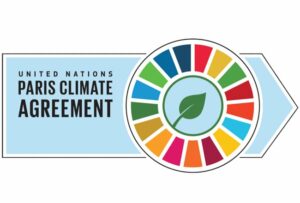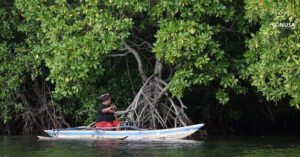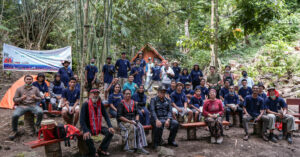What kind of animal comes to mind when you’re asked to name a Papuan animal? Some endemic Papuan animals, such as birds of paradise, cassowaries, and tree kangaroos, may be familiar to you. Apart from these three creatures, Papua has a variety of other endemic species. According to the Indonesian Institute of Sciences (LIPI), Papua has 241 mammal species as of 2019. This figure excludes the diversity of other species, such as hundreds of bird species and a wide range of marine creatures. That’s a lot, isn’t it?
The research of Papua’s diverse flora and fauna continues to this day. The Langguru Expedition, which took place in 2014, was one of the largest explorations into the island’s biodiversity. Hundreds of researchers participated in a 6-week expedition that resulted in the discovery of 50 new species of flora and fauna from many taxa, including birds, insects, amphibians, corals, and orchids. So, do you want to know more about the other animals from Papua? Let’s get to know four of them this time!
1. Crowned Pigeon
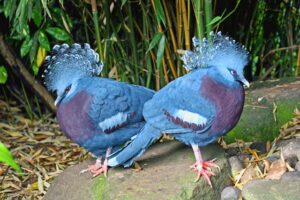
Other than birds of paradise, Papua is also home to other beautiful birds, including crowned pigeon birds.Crowned pigeons (Goura sp.) are birds that belong to the family or group of pigeons. These birds are large, their feathers are dominated by blue-gray color, have red eyes, and they have a crown on their head. There are 3 types of crowned pigeons, namely southern crowned pigeons (Goura scheepmakeri), Victorian crowned pigeons (Goura victoria), and western crowned pigeons (Goura cristata). Crowned pigeons can be found across the Papua region, such as the forests of Biak and Mimika. Unfortunately, crowned pigeons are also often hunted because of the beauty of their crowns and their meat for consumption. Therefore, the population continues to decline and is even listed in the vulnerable category on the International Union for Conservation of Nature’s Red List of Threatened Animals.
2. Dingiso
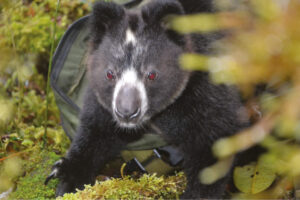
Another Papua endemic species, dingiso, can be found in the Lorentz National Park at an altitude of 3,200-4,400 meters above sea level. This tree kangaroo-like creature has a head length of 52-81 cm, a tail length of 40-94 cm, weighs 6.5-14.5 kg, and walks like a tree kangaroo. Dingiso means sacred animal in the Moni tribe’s local language because they believe dingiso is their ancestor. This one species has been extremely rare to observe since it was first discovered in a research by Dr Tim Flannery in 1994. Furthermore, dingiso is also classified as an endangered animal in the IUCN’s list.
3. Waigeo Cuscus
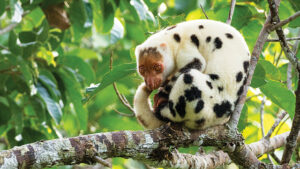
Waigeo cuscus, also known as scham-scham cuscus, is a type of cuscus that originated from Waigeo Island in West Papua, as the name suggests. This variety of cuscus can also be found on several small islands in West Papua. Not only does this cuscus have a unique name, but it also has a one-of-a-kind appearance. Their fur is dominated by white with a number of black spotted patterns, and they have red eyes. The length of the male Waigeo cuscus ranges from 497-560 mm, while the female is around 472 mm and weighs up to 2.65 kg. Waigeo cuscus are nocturnal and shy, only showing up on rare occasions. When threatened, however, they can become aggressive with their enemies. Just like the two previous species, the Waigeo cuscus is listed as a rare and endangered species.
4. Pig-Nosed Turtle
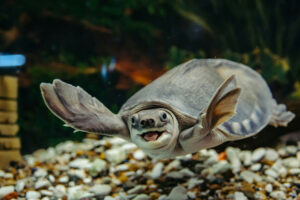
The pig-nosed turtle is a soft-shell freshwater turtle that is endemic in Papua. As the name implies, this species is distinguished by a snout or nose that resembles that of a pig. Pig-nosed turtles can be found in both fresh and brackish water. They are omnivorous animals that eat a wide variety of foods, including fruit, worms, and mice. Pig-nosed turtle eggs, however, are frequently illegally taken. As a result, it’s not surprising that this species of turtle is on the IUCN’s list of endangered animals and is a protected species by the Minister of the Environment and Forestry’s (LHK) Regulation 20 of 2018.
There are many other endemic Papuan animals worth learning about and studying in addition to these four. In fact, many of them do not have complete information yet, so they still need to be investigated further. Thus, this is one of the important roles of researchers in Indonesia as a mega biodiversity country. Currently, our country needs a lot of researchers to explore the wealth of flora and fauna that exist, because who else is going to research it if not us, Indonesians?
If you are interested in becoming a young researcher who uncovers biodiversity in Indonesia, especially Papua, you can join the Young Papuan Scientist program held by the EcoNusa Foundation. Through this program, you can get the opportunity to attend workshops and bootcamps in preparation for research, receive guidance from experts during research, and publish your research results. Sounds interesting, right?






